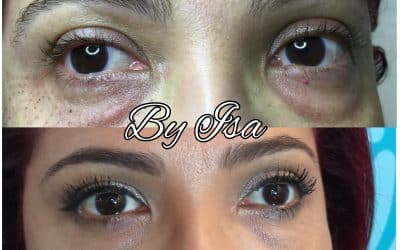There’s no dress code for paradise—but somehow, a new uniform is emerging. Step into any Costa Rican beach town or mountain retreat, and you’ll spot it instantly: breathable fabrics, earth tones, splashy prints, and a certain air of I’m here for good. The expat wardrobe isn’t just about escaping tight collars and winter boots—it’s become a relaxed yet refined style that nods to local sensibilities while maintaining international flair. It’s functional, it’s fashionable, and it’s definitely got a story.
What do expats wear in Costa Rica?
Expats in Costa Rica typically favour breathable, lightweight clothing that blends style with comfort.
The climate shapes every wardrobe choice. Whether they’re settling in Tamarindo, San José, or Monteverde, most newcomers quickly trade in denim and heels for something more forgiving in the humidity. But don’t mistake casual for careless—there’s a laid-back sophistication at play.

- Linen staples
Linen shirts, pants, and dresses reign supreme. The fabric is cool, easy to wash, and looks better slightly wrinkled—perfect for the no-fuss Pura Vida lifestyle. - Tropical prints with restraint
Think palm fronds, not piña coladas. Tasteful patterns have become a signature element, especially on flowing maxi dresses and button-down shirts. - Neutral colour palettes
Soft whites, beiges, olives, and ocean blues dominate. They complement the natural surroundings and don’t scream “tourist.” - Performance wear disguised as leisurewear
Quick-dry shorts and UPF-rated shirts that look like high-end resort fashion? Yes, please. Many opt for stylish functionality that moves easily from beach to bar.
How has Costa Rican culture influenced expat fashion?
Local culture has led to a blend of practicality and simplicity in expat style choices.
Ticos tend to dress conservatively and practically—especially inland. This has influenced expats to rethink overly revealing outfits or flashy accessories. Sandals replace stilettos. A good hat becomes both sun protection and a fashion statement. Over time, expats often adopt a hybrid wardrobe that respects local norms while embracing their own global aesthetic.
What’s behind the rise of ‘barefoot luxury’?
The rise of barefoot luxury reflects a desire for comfort without compromising elegance.
It’s not about sloppy dressing—it’s about effortless polish. Think handwoven bags, artisan jewellery, and linen co-ords that feel posh without being pretentious. Especially in coastal zones like Nosara and Santa Teresa, barefoot luxury fits perfectly with yoga, surf, and boutique hotel culture.
How do expats adapt their style to the seasons?
Expats adjust by layering lightly and choosing fabrics that suit both dry and wet seasons.
The dry season calls for sun hats, airy clothes, and sandals. The rainy season invites light waterproof jackets, quick-dry fabrics, and sturdy footwear that can handle a sudden puddle the size of a small lake.
- Dry season essentials
Wide-brimmed hats, breathable tank tops, and flip-flops (bonus points if they’re leather). - Rainy season go-to’s
Lightweight rain jackets, water-resistant shoes, and clothes that dry quickly without shrinking in the heat.
What are the biggest expat fashion faux pas?
Fashion missteps usually involve overpacking, overdressing, or overbranding.
New arrivals often learn the hard way that stilettos and heavy makeup don’t hold up in jungle humidity. Loud logos and brand-name overloads can feel tone-deaf in laid-back communities. And black? It absorbs heat and shows every grain of dust and sweat. Lesson learned.
FAQs
What fabrics are best for Costa Rica’s climate?
Lightweight, breathable fabrics like linen, bamboo, and cotton are ideal. They help regulate temperature and resist mould in humid environments.
Do expats really dress differently than tourists?
Yes. While tourists may go bold and bright, expats tend to favour more neutral tones and pieces that blend in, not stand out.
Is it acceptable to wear shorts in town?
In beach towns, absolutely. In more formal inland areas like San José, lightweight trousers or longer skirts are often preferred for errands or dining out.
What shoes are most useful in Costa Rica?
Sandals with arch support, trail shoes, and waterproof slip-ons are wardrobe MVPs.
Are swimsuits ever worn in public spaces outside the beach or pool?
Not typically. While beach culture is relaxed, Ticos tend to cover up when leaving the shore.
How do expats dress for formal events?
Even for weddings or special dinners, the dress code skews more elegant-casual. Think sundresses or pressed guayaberas—not tuxedos or ball gowns.
Are there local brands expats love?
Yes. Labels like Jirón, Laetitia, and Tierra & Lava offer stylish, sustainable Costa Rican fashion and skincare products that expats adore.
Do expats shop locally or bring clothes from abroad?
Many do both—starting with what they brought and slowly adding local artisan or boutique finds as their style evolves.
Is there a standard outfit for remote workers?
Yes: collared linen shirt up top for Zoom, swim trunks or yoga pants below. Business meets beach.
What should you avoid wearing in rural areas?
Overly revealing clothes, flashy jewellery, and anything that screams “tourist on safari.” Subtlety and practicality go a long way.






